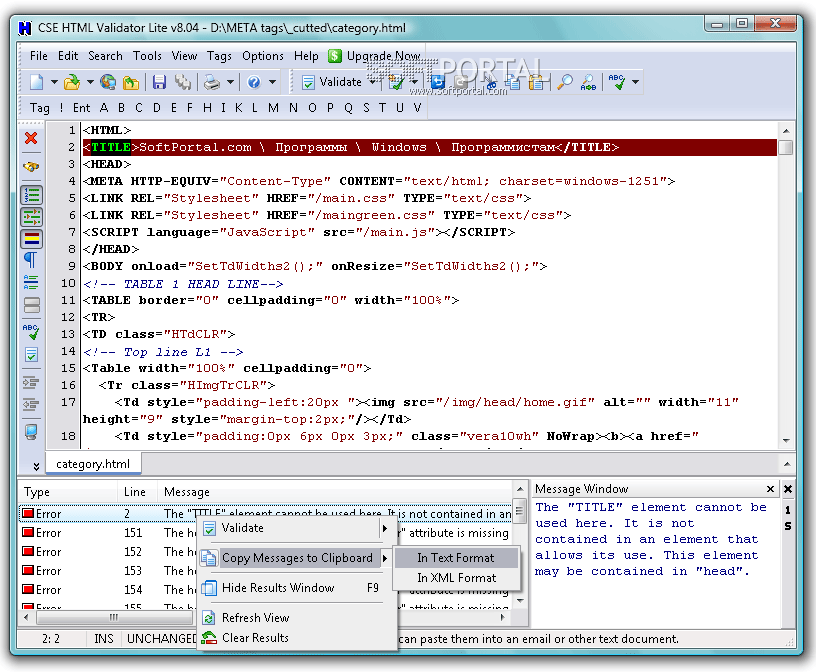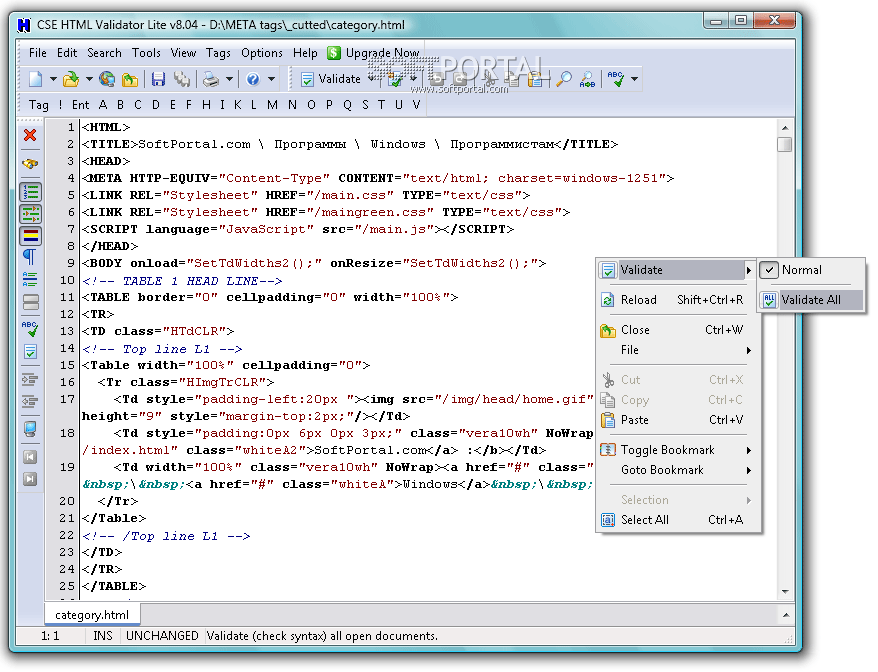
They are database agnostic, cannot be bypassed by end users, and areĬonvenient to test and maintain. Validations are the best way to ensure that only valid data is saved into yourĭatabase.

For example, it may be important to your application to ensure thatĮvery user provides a valid email address and mailing address. Validations are used to ensure that only valid data is saved into yourĭatabase. The second Person will not be persisted to theīefore we dig into more details, let's talk about how validations fit into theīig picture of your application. valid? => false CopyĪs you can see, our validation lets us know that our Person is not valid Under the hood - node-w3c-validator will use > Person. Values must be a string parts or fully value of "unwanted" message. Here can be two arrays, for errors ( suppressErrors) and warnigns( suppressWarnings). You need to specify nodeW3Cvalidator field in your project package.json file. Note! This feature can be used only on html, json and lint formats. You can ignore some errors or warnings by suppressing them.

imports const nodeW3CValidator = require ( 'node-w3c-validator' ) // paths const validatePath = './dist/*.html' // or directly to the file - './dist/index.html' // or a glob pattern - './dist/**/*.html' const resultOutput = './reports/result.html' // validate nodeW3CValidator ( validatePath, ) Errors and Warnings suppressing This is because child_process stdout being truncated when validator check a lot of files. Increase maxBuffer size to prevent !!! OUTPUT ERROR or Unexpected end of JSON input errors. Write reporting result to the path -b, -buffersize (Currently this just means that the names ofįiles being checked are written to stdout.)ĭefault: unset, output is not verbose -V, -version Skip documents that don’t have *.html, *.htm, *.xhtml, or *.xht extensions.ĭefault: unset, all documents found are checked, regardless of extension -H, -htmlįorces any *.xhtml or *.xht documents to be parsed using the HTML parser.ĭefault: unset, XML parser is used for *.xhtml and *.xht documents -no-langdetectĭisables language detection, so that documents are not checked for missing or mislabeled html attributes.ĭefault: unset, language detection & html checking are performed -no-streamįorces all documents to be be parsed in buffered mode instead of streaming mode (causes some parse errors to be treated as non-fatal document errors instead of as fatal document errors).ĭefault: unset, non-streamable parse errors cause fatal document errors -v, -verbose Any error message or warning message that matches the pattern is filtered out (dropped/suppressed)ĭefault: unset, checker does no message filtering -s, -skip-non-html Any error message or warning message that matches a regular expression in the file is filtered out (dropped/suppressed)ĭefault: unset, checker does no message filtering -filterpattern Each line of the file contains either a regular expression or starts with "#" to indicate the line is a comment. It uses a eslint-formatter-pretty under the hood lint format is designed for convenient error output to the terminal. Lint format is available from 1.4.0 version. Possible values: gnu | xml | json | text | html | lint Specifies the output format for reporting the results Makes the checker exit zero even if errors are reported for any documents -f, -format Specifies that only error-level messages and non-document-error messages are reported (so that warnings and info messages are not reported).ĭefault: unset, all message reported, including warnings & info messages -q, -exit-zero-always Specifies whether ASCII quotation marks are substituted for Unicode smart


reports/result.html -s Options -i, -input


 0 kommentar(er)
0 kommentar(er)
